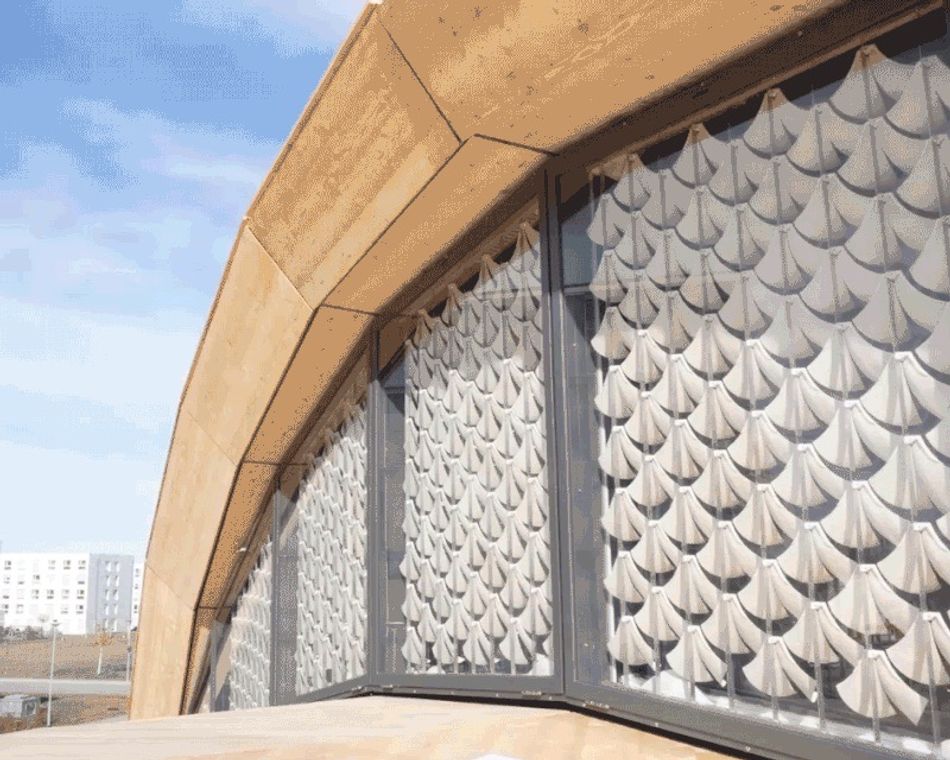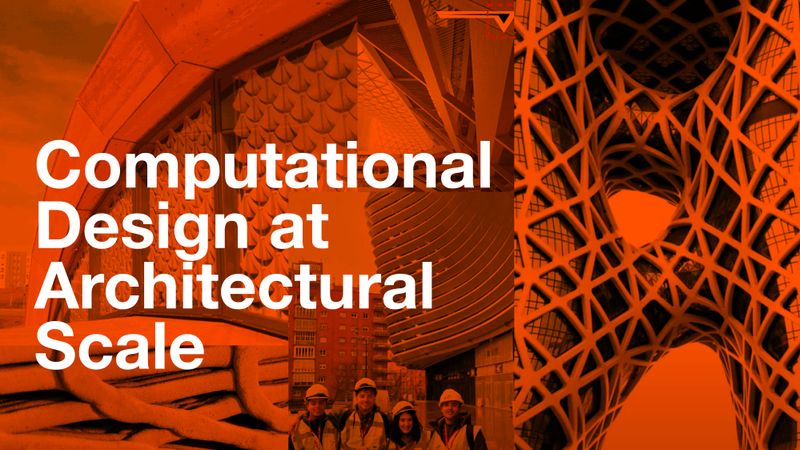Computational Design at Architectural Scale
As seen at CDFAM Computational Design Symposium
This article was first published on
cdfam.comAs digital workflows, simulation, and automation reshape how products and systems are designed and built, architecture continues to serve as both a testing ground and a source of innovation. At CDFAM Amsterdam 2025, the architectural scale takes center stage—highlighting how computational methods developed for buildings are now informing work across manufacturing, infrastructure, and robotics.
This year’s program features architects and engineers applying advanced design logic, performance simulation, and fabrication-aware modeling to large-scale structures. But it also shows how these same methods are being translated to smaller scales—from 3D-printed metal components to adaptive building skins and modular city infrastructure.
Architectural Engineering in Practice
A keynote from Mathew Vola, Director and Arup Fellow, anchors this year’s architectural track. With more than two decades of experience leading large-scale, computationally intensive building projects across Europe, Asia, and Australia, Vola has played a key role in embedding digital workflows into Arup’s global design practice.

Through the development of inForm, Arup’s internal computational design platform, Vola has helped standardize and scale digital tools for geometry, simulation, and performance analysis. His efforts have supported a network of hundreds of engineers applying these tools to complex problems—ranging from façade optimization to sustainability metrics.
One example is the Santiago Bernabéu Stadium renovation, presented at CDFAM Berlin 2024 by Arup’s Rick Titulaer. In that case, parametric simulation and sun-path analysis were used to rationalize thousands of façade panels and reduce glare impacts—demonstrating how architectural computation can address performance and buildability at massive scale.
Selected Architectural Presentations at CDFAM Amsterdam 2025
Tiffany Cheng (Cornell University) – Bioinspired and Biobased 4D-Printing for Adaptive Building Facades
Using cellulosic materials and hygromorphic structures, Cheng shows how plant-like motion can be harnessed for climate-responsive architecture.Dr. Vittoria Laghi (University of Bologna) – Green Steel Construction with Topology Optimization and Metal AM
Combining structural engineering with 3D metal printing, Laghi demonstrates how digital fabrication and performance simulation can minimize material use in steel assemblies.Verena Vogler (McNeel Europe) – New Developments in Rhino and Grasshopper for Ecological Performance
A preview of tools expanding environmental analysis within core parametric modeling workflows—including a new plugin developed through the EU-funded ECOLOPES project.Dr. Luca Breseghello (DTU) – 3D Concrete Printing for Low-Impact Structures
Exploring stress-based material placement for slabs and beams using computational concrete printing, validated with life-cycle assessment and physical testing.Urban Futures Lab (Barashkov & Drusinsky) – Strategic Foresight through Computational Urban Analysis
Applying trend data and cultural indicators to adaptive urban planning frameworks—combining hard simulation with human-context design.

Architecture as a Scalable Design Framework
Past CDFAM events have shown how architectural logic can scale up and down—applied to façade systems, structural elements, and increasingly to non-building products. From Ronald Rael’s robotic mud printing for housing to Keyan Rahimzadeh’s metadata-driven glass façade systems, architectural computation has repeatedly demonstrated value far beyond form-making.
Presenters like Madeleine Eggers (KPF) have shown how geometric workflows once used only in large buildings can be standardized and applied to global megaprojects. Meanwhile, engineers like Sean Turner and Dauphin Flores (Henderson Engineers) are applying similar logic to mechanical systems—transforming legacy workflows into modular, reusable systems that enable automation and traceability across infrastructure projects.
Cross-Pollination Across Industries
Importantly, many of the architectural tools and mindsets showcased at CDFAM are now being applied outside the built environment. Architects trained in spatial reasoning, simulation, and fabrication-aware design are now contributing to product design, footwear development, medical technology, and advanced manufacturing.
One such example is Onur Yüce Gün at New Balance, who has applied generative design and performance modeling to athletic footwear—translating architectural methods to human-scale products.
Whether designing complex buildings or embedded components, these practitioners share a common approach: combining parametric logic, physical constraints, and simulation in real-time feedback loops that drive innovation across sectors.
Join the Conversation at CDFAM Amsterdam 2025
CDFAM Amsterdam 2025 offers a single-track, interdisciplinary program focused on computational design across scales—from architectural systems to microstructures, from generative tooling to machine learning in simulation.
Whether you work in architecture, product design, energy, aerospace, robotics, or advanced manufacturing, the event provides a rare opportunity to engage with experts building the next generation of digital workflows.
Register at cdfam.com to join a global community pushing computational design forward—across domains, industries, and scales.
